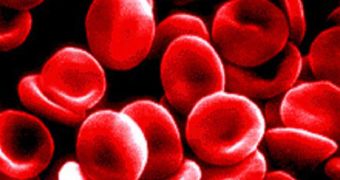People were for long puzzled by the severe effects of some blood transfusions, till scientists discovered in 1900 the ABO system.
Since then, the blood is assigned into four groups based on the presence or absence of antigenic inherited molecules on the surfaces of red blood cells.
"Group A has an enzyme that puts a sugar molecule ( an antigen) on the end. Group B also has an extra sugar molecule, different from that on group A, at the end of its structure. But group O has neither kind of sugar molecule." explained Geoffrey Daniels, a transfusion scientist at the University of Bristol in England.
The organism synthesizes antibodies to the lacking antigens.
People with blood type A naturally have antibodies to the blood plasma from type B, and vice versa.
If people get blood transfusions of a mismatched type, their antibodies attack the foreign antigens, triggering a powerful and often deadly immune response.
"The blood cells clump together as a consequence of the antibodies acting like a glue between cells, and thus blood gets very thick," said Steve Withers, a bioorganic chemist at the University of British Columbia, Canada.
"The red blood cells can explode."
The blood type O, however, can be donated to anyone, since it does not contain any antigens.
Now an international team has developed a method of turning blood types A, B, and AB to type O.
The method employs bacterial proteins that can quickly transform one blood type into another by clipping away antigen molecules on red blood cells.
"One way to solve the supply crunch is to snip away the sugar molecule in the A and B groups, giving antibodies no targets," said Henrik Clausen, a sugar biologist at the University of Copenhagen in Denmark.
Clausen's team investigated hundreds of different bacteria for enzymes that could accomplish the task much more efficiently. "Think of the sugar molecules attached to a blood cell as a string of pearls. We carefully clipped away one pearl that was the 'A' and 'B' in the blood groups A, B, and AB, making the blood acceptable to all recipients. The process may help address the current blood shortage." said Clausen.
"The method is useful in generating the type of blood from groups A and B that will help all recipients when there is a shortage in blood supply. On a more immediate level, it will help patients who need regular transfusions, and specifically require blood from group O. Accidental transfusion of the wrong type of blood has a higher risk of death than infectious disease. This method makes blood transfusion more safe." added Daniels.

 14 DAY TRIAL //
14 DAY TRIAL //